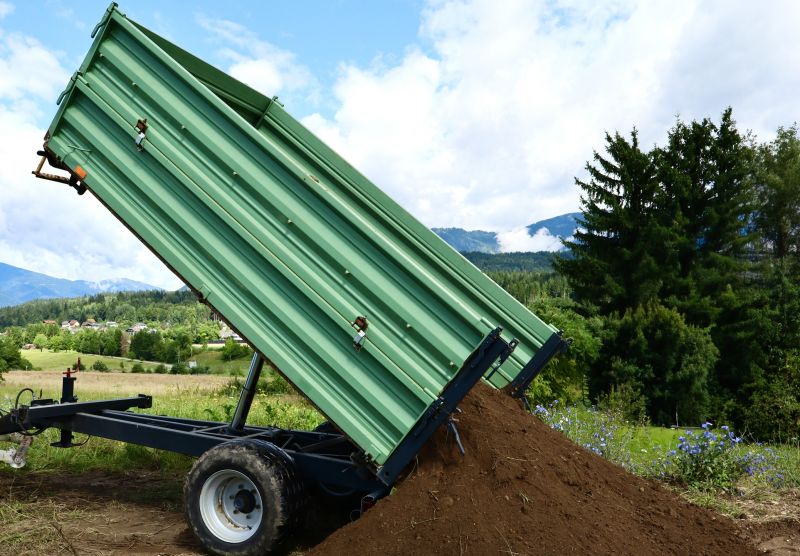Leading Products For Effective Dirt Installation Techniques
Learn about top-rated products that help achieve precise and reliable dirt installation for various applications.
 Creating a stable and durable foundation for dirt installations requires selecting the right products tailored to the specific project needs. Whether constructing a garden pathway, a landscape feature, or a recreational area, the right materials can significantly impact the longevity and appearance of the installation. Proper preparation involves understanding the different types of products available, from base materials to surface finishes, ensuring that each layer functions effectively to support the overall structure.
Creating a stable and durable foundation for dirt installations requires selecting the right products tailored to the specific project needs. Whether constructing a garden pathway, a landscape feature, or a recreational area, the right materials can significantly impact the longevity and appearance of the installation. Proper preparation involves understanding the different types of products available, from base materials to surface finishes, ensuring that each layer functions effectively to support the overall structure.
Top Overall Option
Crushed Gravel Base Layer
A crushed gravel base layer provides a versatile and effective foundation for various dirt installations. It offers excellent drainage, stability, and compaction, making it suitable for pathways, patios, and garden beds. When properly installed, it helps distribute weight evenly and reduces shifting or settling over time, contributing to a long-lasting outdoor surface.
Types of Products For Dirt Installations
Crushed Gravel
Provides a stable and drainable base for many outdoor projects, ideal for pathways and patios.
Decomposed Granite
A compactable material suitable for pathways and low-traffic areas, offering a natural look.
Geotextile Fabric
Reinforces soil and prevents mixing of base materials with underlying soil, enhancing stability.
Landscape Fabric
Used to suppress weed growth while allowing water drainage beneath the surface.
Sand
Serves as a leveling layer or bedding material under pavers and stones.
Paving Stones
Provides a durable surface for walkways, patios, and outdoor seating areas.
Compacting Tools
Essential for compressing base layers to ensure stability and prevent shifting.
Soil Stabilizers
Chemicals or additives that improve soil cohesion and reduce erosion in dirt installations.
Mulch
Used as a surface finish to suppress weeds and retain soil moisture.
Edging Materials
Defines boundaries and keeps materials in place for clean, organized installations.
Drainage Pipes
Facilitates water removal and prevents pooling around the installation.
Retaining Wall Blocks
Supports soil retention and creates level areas on sloped terrain.
Soil Amendments
Improve soil fertility and structure for planting or landscaping purposes.
Landscape Staples
Secure landscape fabric or edging in place for a tidy and stable setup.
Popular Choices
Widely used as a foundational material for outdoor pathways and patios, appreciated for its drainage qualities.
Popular for natural-looking pathways and garden areas due to its compactability and aesthetic appeal.
Commonly selected to reinforce soil and improve longevity of dirt-based installations.
Favored for creating durable, low-maintenance surfaces in outdoor living spaces.
Often used to control weeds while allowing water to pass through beneath the surface.
A go-to material for bedding and leveling in paving projects and garden beds.
Essential for managing water flow and preventing erosion in large or sloped installations.
Chosen for creating terraced landscapes and preventing soil movement on slopes.
Popular for finishing garden beds and suppressing weeds in dirt installations.
Commonly used to define borders and keep materials neatly contained.
Trending for enhancing soil cohesion and reducing erosion in high-traffic areas.
Frequently used to ensure base layers are properly compressed for stability.
Popular for improving soil quality before planting or installation.
Many projects benefit from a layered approach, starting with a solid base to improve drainage and prevent shifting over time. This base often includes crushed stones or gravel, which provide stability and facilitate water movement. Over this foundation, various types of stabilizers or geotextile fabrics may be used to reinforce the soil and prevent erosion. The choice of surface material—such as compacted soil, decomposed granite, or paving stones—further influences the durability and usability of the installation.
Selecting appropriate products involves considering factors like load-bearing capacity, ease of installation, and maintenance requirements. Different products are designed to accommodate various project sizes and types, from small garden beds to large outdoor recreational spaces. Properly chosen materials can help ensure that the dirt installation remains functional and visually appealing for years to come, reducing the need for frequent repairs or adjustments.
Understanding the variety of products available and their specific applications can help homeowners and landscapers make informed decisions. By focusing on quality and suitability rather than brand names, users can assemble a reliable foundation that meets their project goals. The right combination of base materials, stabilizers, and surface finishes can transform a simple dirt area into a well-structured outdoor feature that withstands weather and usage over time.
Key Buying Considerations
- Determine the primary purpose of the dirt installation, such as pathways, patios, or garden beds.
- Assess the load-bearing requirements to select appropriate base materials.
- Consider drainage needs to prevent water pooling and soil erosion.
- Evaluate the soil type and stability to choose compatible stabilization products.
- Think about ease of installation and whether specialized tools or equipment are needed.
- Select materials that match the aesthetic goals of the project, from natural to structured looks.
- Check for compatibility of different products to ensure proper layering and performance.
- Review maintenance requirements of the chosen materials to ensure long-term satisfaction.
- Estimate project size accurately to determine quantities and avoid shortages.
- Consider local availability of materials to reduce transportation costs and delays.
- Prioritize quality to minimize the need for frequent repairs or replacements.
- Be mindful of environmental conditions that may affect material performance.
- Plan for future expansion or modifications when choosing materials and layout.
- Review safety guidelines for handling and installing heavier or chemical-based products.
- Consult with professionals or experienced DIYers for additional insights.
